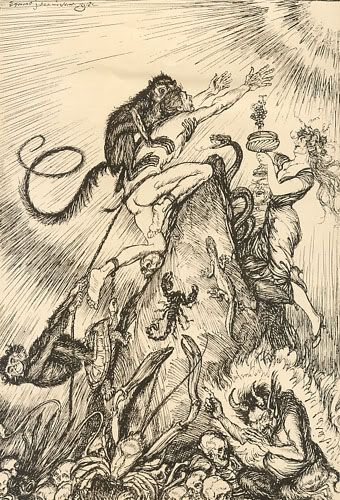
Edward J SULLIVAN
We come up through many slaveries into freedom
ink on paper
from Bibby's Annual, 1918
I have recently seen finer work at NGV's satirical Victorian etchings exhibition but found the symbolism* used of interest.
In classical art from around the world, various animals represent different things as do certain flowers and their colours. The complex vernacular would have been familiar to contemporary viewers though today most of us have no idea what these things mean without a formal art education or a certain religious/cultural background. The modern artist isn't bound by historical symbol conventions.
I can't help but think that as a 21st century artist it is provocative to know some of these symbols and incorporate them where appropriate. Artists are free to invent their own symbols and hope the viewer is thoughtful enough to interpret them, or already be familiar with them. The audience is more educated and with greater access to information than any preceding it. I believe in encouraging an audience to think without being wilfully obscure, to question what they see and seek to understand it.
Further Reading
* This particular piece uses commonly used, highly conventional Christian art symbolism Explained:
Monkeys
Snake/serpents, more complex than just plain evil!
Tortoise or turtle
Skulls, yes everyone knows they are about death and mortality but they can be an affirmation of life.
No comments:
Post a Comment